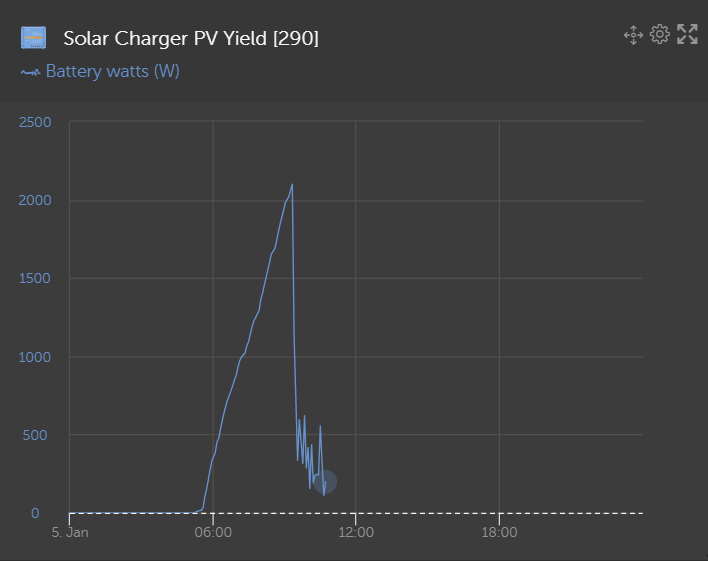Hi there ET forum people! ![]()
The Victron Multi RS is new on the market so I’m not sure who out there has some hands on experience with it at this stage.
I read in the manual that it can handle 2x panel strings however each string should be limited to 3000W.
Maximum DC solar charging power - 6000 W total - 3000 W per tracker
I was hoping to run all my panels 8x CS545 on a single string, so as to be able to reuse my existing SPD, that would be 4360W ( 8x 545W) max, and I don’t have a problem with it clipping the power to 3000W, since beyond that, my battery capacity starts to be the limiting factor in the daily sun harvest.
-
I would just like to know if that is a hard “inverter/mppt breaking” limit, or if it will just clip anything over 3000W?
-
There is also the limitation of not exceeding 8x battery float voltage, so conservatively speaking on a 15 cell pack, that would be ~ 51.5V * 8 = 412V
STC Voc per panel is 49.4V. so that would be (8x 49.4V) = 395.2V, which seems to me like it should be ok? -
Finally “The maximum operational input current for each tracker is 13 A.”
With the CS545 at STC we have Imp 13.14 A and Isc 13.95 A (NMOT Imp is 10.52 A and Isc 11.25 A)
Personally on my existing setup, I have blown 30A fuses on my SPD on multiple occasions, running a 4s2p configuration, meaning at STC I’m supposed to have max 27.9A? (2x 13.95 A STC Isc?), yet somehow due to cloud bursts or who knows, I’m occasionally reaching 30A? (This is now, in summer conditions, in the WC)
Should this 13 A number, be a concern for me when considering this unit? or will the tracker limit the current to 13A to protect itself if required?
This is the "Maximum operational PV input current limit 13 A, as opposed to the “Max. PV short circuit current 16 A”
(I would like to be running a 8s1p configuration on a single tracker, ideally)
Thank you


